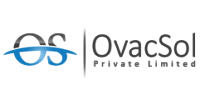Top HRMS Features You Need to Know About
Human Resource Management Systems (HRMS) are now essential in organizations of all sizes and types. These systems integrate various HR functions, automate operations, and improve employee experiences. But how do you identify the most critical HRMS features for your organization?This article gives you some of the basic HRMS features that you should know, and in turn assist you to make what is, in these times, an informed choice on the system selection for your organization.
Employee Information Management
No system can be complete without the above feature as every HRMS system will allow administrative users to manage employee information. Today’s HRMS makes it possible for employers to store such information in one place, including but not limited to an employee’s name and contact information, career progression, evaluations, salary, and benefits.
Key Benefits:
- Employee’s data geographical location has no restrictions
- Reduces time and enhances accuracy
- Reduces conflicts with regulatory bodies
Such an efficient employee information management system provides alternatives to the elimination of paper forms and ensures that information is stored safely and obtained easily. Through this feature, the Human Resources (HR) department will support the retention of employee documents and record their various HR activities from recruitment to termination of employment.

Key HRMS features that streamline business operations.
Recruitment and Onboarding
Recruitment and onboarding are fundamental HR functions. When integrated into an HRMS, tasks like placing ads, recruiting, and onboarding employees become easier.
Key Benefits:
- Careers can be advertised on multiple sites perspiring job positions
- Monitoring of the candidates applying through an ATS
- The integrated development of new employees is made easier
An efficient recruitment module works like a charm as it integrates with job boards and social networking sites allowing a wider scope of recruitment. HRMS can probe education, document submission, training schedules, and benefit enrollment in health-care facilities after signing a candidate.
Payroll Management
Payroll has its difficulties, especially if many pay scales, taxes, and benefits are present in the structure of a single company. For a payroll system in an organization to efficiently deploy and manage payroll, a good number of key areas needs to be covered.
Key Benefits:
- Automated payroll calculations for employees and deductions when incorporating tax
- Management and control over tax laws and compliance regulation within corporation
- Ability to create pay statements and for direct deposit
By integrating payroll into business operations companies are capable of making precise and timely payments to its employees eliminating many risks. Furthermore, an HRMS can save time as staff can retrieve and view payslips and tax records through the system.
Monitoring of the Working Hours per Day and Attendance
Observation of employee presence is tracking as well one of the HR measure that is very necessary. In fact, a HRMS system is dependable in terms of the tracking of working hours, overtime, sick leave, vacation days, and absence from work. It connects time-keeping tools and salary processing so that the figures do not have to be computed manually anymore.
Key Benefits:
- Tracking employees work hours worked on various activities at all times
- The payroll module is adequate and ensures right salaries are derived
- Time and Attendance reports and analysis
In essence, by automising time and attendance tracking, organizations enhances accuracy in payroll calculations as well as cost of time theft. Likewise, employees can check the system for their leave balances and apply for time off.
Employee Self-Service Portal
In relation to self-service, the employee self-service portal is perhaps the most requested HRMS feature. With this portal, workers can perform several HR functions with no direct interaction with the HR personnel. Personnel can usually change their details, see their earnings and payment history, apply for time off, and review their offered benefits.
Key Benefits:
- Workers are more self-sufficient and self-satisfied
- Minimises the administrative workload on HR departments
- Reducing time to manage personal HR information
In the absence of an automatic solution, employees have to contact HR, which may also lead to increased workload on this department. To counter these challenges one of the ways is to give employees a self service platform.
Performance Management
Ideally, an HRMS should assist employees in performance management activities such as goal-setting, appraisal, and progress monitoring among others. More providers of HRMS applications are incorporating performance management features into their applications that allow their end users, remember the HR professionals, to manage employee performance with reviews as per specified requirements, feedback and evaluation of KPIs.
Key Benefits:
- Improved performance appraisal processes
- Better employee performance through increased feedback
- Both the setting the objective and measuring the achievements of the target
Such issues enable managers to clearly communicate performance standards to employees and facilitate internal feedback, promoting continuous improvement and fostering a performance-driven culture.
Learning and Development (L&D)
Growth or improvement of an employee through formal education or exposure to a wide range of training is an important aspect in a progressive company. Included within the embedding HRMS system will be features that relate to employee learning and development through providing employees access training material, certifications and career progression plans.
Key Benefits:
- Flexible course approaches to suit the needs of employees within a firm
- Provides records regarding how each employee is developing his or her career
- Marriage of the employee with the certification institutions and educational providers
L&D allows organizations to enhance employees by offering appropriate and necessary courses and materials which too little kept them behind on the timestamp. L&D accurately makes it possible for organizations to monitor accomplishments and ensure that employees meet the required level of fitness and skill.
Managing Employee Benefits
Managing employees’ health insurance or retirement plans or bonuses could be a difficult task if one lacks the required tools. This is, however, not the case for HR departments that use HRMS platforms that have benefits management modules since all aspects of employee benefits can be supervised and administered effortlessly.
Key Benefits:
- Efficient management of benefits enrollment and tracking
- Collaboration with health care and retirement service providers
- Empowering employees on how to utilize and manage benefits
Employees’ access to the right benefits and their choices during open enrollment periods are made easier by HRMS as these systems simplify the process of benefits management. It also streamlines the process of following the regulations applicable to benefits.
Verification and Record Keeping
In the current regulatory framework, compliance is at the top of the hierarchy of key issues for HR departments. One of the features that supports compliance assists in ensuring that business management operates within the confines of labor laws, tax laws, and regulations of industries. Lastly, HRMS systems can provide astonishing reporting variables for measuring and monitoring human resources management trends and activities.
Key Benefits:
- Local, state and federal laws compliance – automated.
- Conducting detailed communication and appointments with the employees regarding HR functions.
- Lowers chances of facing legal disputes.
Thanks to secure HRMS, companies have access to changing regulations and can avoid paying fines as all required documents are available and complete. Reporting activities reduces the burden for companies in monitoring KPIs and reporting on HR functions.
Analytics and Reporting
Reports, facts and figures are the most treasured parts of the HRMS. It helps organizations understand how many employees have left the organization, how many new employees have been recruited and even increased productivity levels in the workplace.
Key Benefits:
- Measurable objectives reduce opinion-based decision making.
- To report any complaints on HR Services.
- To Get information about employee performance at the moment.
These analytic HRMS platforms also allow HR heads to diagnose problems as soon as possible such as employee turnover rates or engagement indexes – all with an easy-to-follow design.
Mobile Accessibility
As business settings become more flexible, the need to avail HR functions remotely is increasingly becoming crucial. Many leading HRMS systems today have mobile modules enabling HR managers and employees to complete basic HR tasks via the mobile or tab.
Key Benefits:
- Support for employees who remotely or transition often
- Efficient handling of HR data and inquiries in real-time.
- Employees’ issues and HR contacts are straightforward now.
Mobile tools allow workers to request time-off, examine their benefits, or check their performance reviews from any geographic location. HR staff can also handle payroll processing, employee education, and other activities.
Frequently Asked Questions: (FAQs)
What is the most common function of the HRMS?
An employee management information system, recruitment, compensation, time and attendance, performance and activity tracking, employee self service, and reporting modules are among the HRMS common modules.
Why do you think HRMS would be helpful to the organization?
There is a considerable enhancement in productivity because of the self-service system; thus, HR teams can dedicate themselves more to strategic agendas rather than time consuming administrative work.
Is HRMS safe?
Yes HRMS vendors take into account levels of sensitivity of the employee data and put in place security measures that are robust enough to handle the most sensitive of employee data. Most of them work within, or strive to meet, such compliance requirements as the GDPR or HIPAA.
What role can HRMS play in achieving compliance?
HRMS systems facilitate compliance through the automation of easy yet tedious tasks such as payroll processing, benefits payments, modulating reports or maintenance of employees’ files. The system ensures compliance of organizations to the law, taxation, and business norms in regard to type of activity undertaken.




